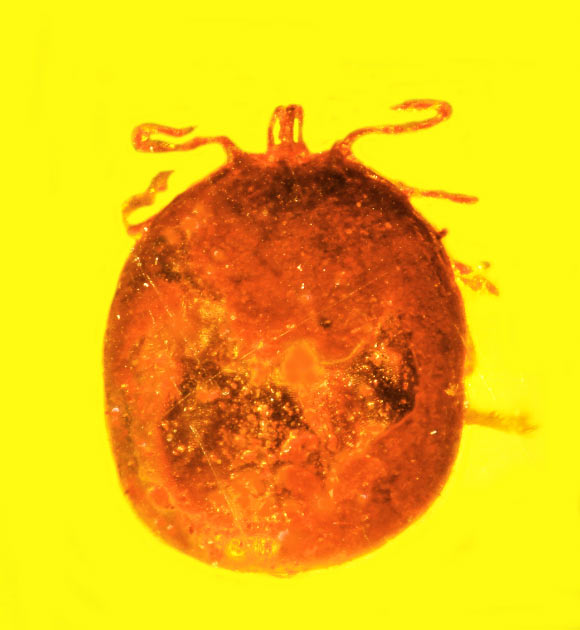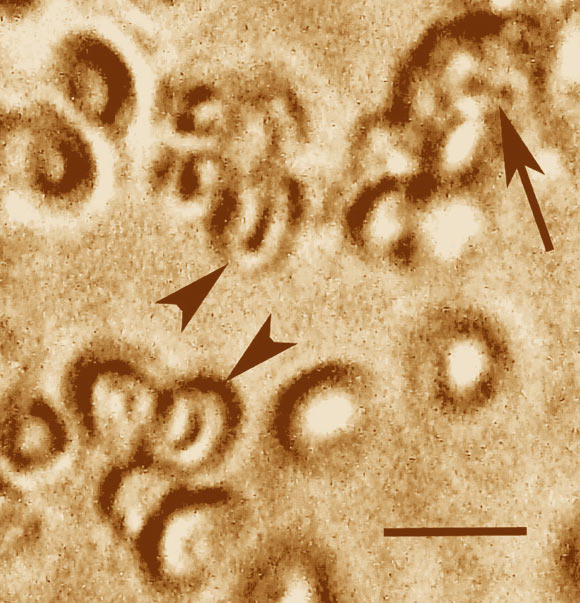A blood-engorged nymphal tick of the genus Amblyomma surrounded by fossilized mammalian erythrocytes (red blood cells) has been discovered in a piece of 15-45-million-year-old amber. The discovery is reported March 20 in the online edition of the Journal of Medical Entomology.

This blood-engorged nymphal hard tick Amblyomma sp. (length – 2.5 mm) found as a fossil in Dominican amber shows two small holes in its back, as if it were just picked off the animal it was feeding on. Image credit: George Poinar, Jr., Oregon State University.
Two small holes in the back of the Amblyomma tick, which allowed blood to ooze out just as the tick became stuck in tree sap that later fossilized into amber, provide a brief glimpse of life in a tropical jungle millions of years ago in what is now the Dominican Republic.
“These two tiny holes indicate that something picked a tick off the mammal it was feeding on, puncturing it in the process and dropping it immediately into tree sap,” said Oregon State University Professor George Poinar, Jr., author of the study.
“This would be consistent with the grooming behavior of monkeys that we know lived at that time in this region,” he added.
The amber specimen was obtained from mines located in the Cordillera Septentrional of the Dominican Republic.
“Estimated ages range from 15–23 million years, based on foraminifera counts, to 30-45 million years, based on coccoliths,” Prof. Poinar said.

Two uninfected fossil mammalian erythrocytes (arrowheads), and one infected with Babesia-type pathogen Paleohaimatus calabresi (arrow). Scale bar - 10 µm. Image credit: George Poinar, Jr.
The discovery also describes the only known fossils of a type of extant parasite, Babesia (Theileria) microti, which infects the blood cells of humans and other animals.
“The fossilized blood cells, infected with these parasites, are simply amazing in their detail. This discovery provides the only known fossils of Babesia-type pathogens,” Prof. Poinar said.
“This parasite was clearly around millions of years before humans, and appears to have evolved alongside primates, among other hosts.”
He added: “part of what makes these fossils unique is the clarity by which the parasites and blood cells are preserved, almost as if they had been stained and otherwise treated in a laboratory for inspection.”
“The parasites were different enough in texture and density to stand out clearly within the erythrocytes during the natural embalming process for which amber is famous.”
_____
George Poinar, Jr. Fossilized Mammalian Erythrocytes Associated With a Tick Reveal Ancient Piroplasms. J Med Entomol, published online March 20, 2017; doi: 10.1093/jme/tjw247







